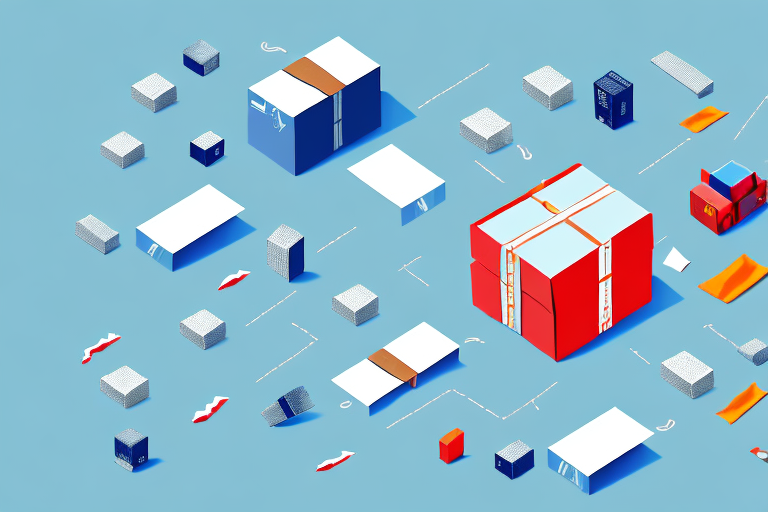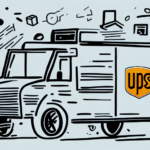Understanding UPS Insurance: Essential Protection for Your Valuable Shipments
Shipping valuable goods through UPS requires a comprehensive understanding of UPS Insurance. This insurance provides crucial protection and peace of mind by ensuring that any potential damages or losses during transit are financially covered. With varying costs based on several factors, it's essential to grasp how UPS Insurance pricing works, what influences it, and how to accurately calculate the value of your shipment. This guide offers an in-depth exploration of UPS Insurance pricing to help you make informed decisions when selecting a coverage plan.
What is UPS Insurance and Why Do You Need It?
UPS Insurance is an add-on service offered by UPS to protect against financial loss or damage to packages during transit. While UPS strives to deliver packages in excellent condition, unforeseen accidents can occur. In such cases, UPS Insurance ensures that shards of potential financial loss are mitigated.
The value of insured packages can range significantly, from a few hundred to several thousand dollars, depending on the items being shipped. For businesses and individuals shipping high-value items without insurance, the financial repercussions of loss or damage can be substantial.
It's important to note that UPS Insurance is not included automatically in the cost of shipping. Shippers must select and pay for insurance separately when creating a shipment. Additionally, the insurance only covers the declared value of the package, which is the maximum amount UPS will reimburse in the event of loss or damage. Accurately declaring the package's value ensures proper coverage and financial protection.
How UPS Insurance Pricing is Determined
The cost of UPS Insurance is influenced by several key factors:
- Declared Value: The higher the declared value of the shipment, the higher the insurance cost.
- Destination: Packages shipped to destinations with higher rates of loss or damage may incur higher insurance premiums.
- Package Characteristics: The weight, dimensions, and nature of the package play significant roles in determining insurance costs.
- Mode of Transportation: Air, ground, and express services have different risk profiles and associated insurance costs.
- Delivery Time Frame: Faster delivery options may come with higher insurance premiums due to the expedited logistics involved.
For detailed information on UPS's insurance pricing structure, refer to the UPS Service Guide.
Types of UPS Insurance Coverage
UPS offers various insurance coverage options to cater to different shipping needs:
- Declared Value Coverage: Provides protection based on the declared value of the shipment, covering loss or damage during transit.
- Excess Value Coverage: An optional additional coverage that extends protection beyond the standard declared value, ideal for high-value shipments.
- Declared Value Multi-Piece Shipment Coverage: Covers multiple packages within a single shipment, simplifying the insurance process for bulk shipments.
- Declared Value Bulk Shipment Coverage: Tailored for large-volume shipments, offering coverage for bulk items.
Choosing the right type of coverage depends on the value and nature of the items being shipped. For high-value or fragile items, excess value coverage may provide the necessary additional protection.
Calculating the Value of Your Shipment
Accurately determining the value of your shipment is crucial for adequate insurance coverage. Here's how to calculate it:
- Assess Item Value: Determine the total value of the items being shipped, excluding shipping costs.
- Include Additional Costs: Account for taxes, shipping fees, and handling charges associated with the shipment.
- Consider Maximum Coverage Limits: UPS has maximum declared value limits, typically up to $50,000 for domestic shipments and $100,000 for international shipments. For packages exceeding these limits, additional insurance or alternative carriers may be necessary.
For more details on declaring shipment value, visit the UPS Declared Value FAQ.
Tips for Lowering Your UPS Insurance Premiums
Reducing the cost of UPS Insurance premiums is achievable through strategic planning and packaging:
- Select Appropriate Coverage: Choose a coverage plan that aligns with the actual value and destination of your shipment.
- Proper Packaging: Ensure that items are securely and properly packaged to minimize the risk of damage during transit.
- Optimize Declared Value: Declare only the necessary value to cover potential losses without inflating the shipment's worth.
- Accurate Documentation: Prepare all required shipping documents accurately to avoid additional fees or delays.
- Choose Suitable Transportation Modes: Selecting the most appropriate mode and delivery time frame based on your shipment's requirements can lead to cost savings.
Enrolling in services like UPS Smart Pickup can also help reduce insurance premiums by optimizing pickup schedules and reducing the risk of delays.
Comparing UPS Insurance with Other Shipping Insurance Options
While UPS offers robust insurance options, it's important to compare them with other available shipping insurance to determine the best fit for your needs:
- Third-Party Insurance: Often provides customizable coverage but may involve a more complex claims process.
- Seller Protection Policies: Available through platforms like eBay or Amazon, these policies offer protection tailored to online sellers.
- Carrier-Provided Insurance: Other carriers like FedEx and DHL offer their own insurance packages, which may have different coverage terms and pricing structures.
Advantages of UPS Insurance include guaranteed claims processing, real-time package tracking, and streamlined online claim filing, which often surpass the offerings of third-party insurers.
When comparing options, consider the specific items being shipped, coverage limits, policy flexibility, and the ease of filing claims. Ensure that the chosen insurance aligns with your shipping requirements and provides adequate protection for your valuable items.
Understanding the UPS Insurance Claims Process
In the unfortunate event of a loss or damage, understanding the UPS Insurance claims process is essential for timely and efficient reimbursement:
- File a Claim Online: Initiate the claims process through the UPS website, providing necessary details about the shipment and the nature of the loss or damage.
- Submit Required Documentation: Include proof of shipment value, photographs of the damaged goods, and any relevant receipts or invoices.
- Claim Assessment: UPS will assess the claim, which may involve a review of the submitted documentation and investigation of the incident.
- Receive Reimbursement: Upon approval, UPS will reimburse the declared value of the shipment, minus any applicable deductibles.
To ensure a smooth claims process, adhere to UPS's guidelines and provide complete and accurate information. Proper packaging and handling can also minimize the likelihood of needing to file a claim.
The Future of Shipping and Its Impact on UPS Insurance Costs
The shipping industry is rapidly evolving with advancements in technology and automation, which are set to influence the future cost of shipping insurance:
- Automation and Robotics: Increased use of automated systems and robotics in shipping can reduce human error, potentially lowering insurance premiums due to decreased accident rates.
- Drone Delivery: The adoption of drone delivery systems may alter risk profiles and insurance cost structures based on the reliability and safety of unmanned delivery methods.
- Data Analytics: Enhanced data analytics can lead to more accurate risk assessments, allowing for more tailored and potentially lower insurance rates.
- Sustainability Initiatives: Investments in sustainable shipping practices may attract insurance benefits or lower premiums as risk profiles change.
Staying informed about these developments is crucial for businesses and individuals to adapt their shipping strategies and insurance plans accordingly.
For insights into industry trends, refer to reports from organizations like the American Logistics Institute.
Conclusion
UPS Insurance offers essential protection for valuable shipments, ensuring financial security against potential losses or damages during transit. By understanding how UPS Insurance pricing is determined, the types of coverage available, and strategies to lower premiums, businesses and individuals can make informed decisions to safeguard their shipments effectively.
Comparing UPS Insurance with other shipping insurance options and understanding the claims process further empowers shippers to choose the best protection for their needs. As the shipping industry continues to evolve, staying informed about future trends will help in adapting insurance strategies to maintain cost-effectiveness and comprehensive coverage.








